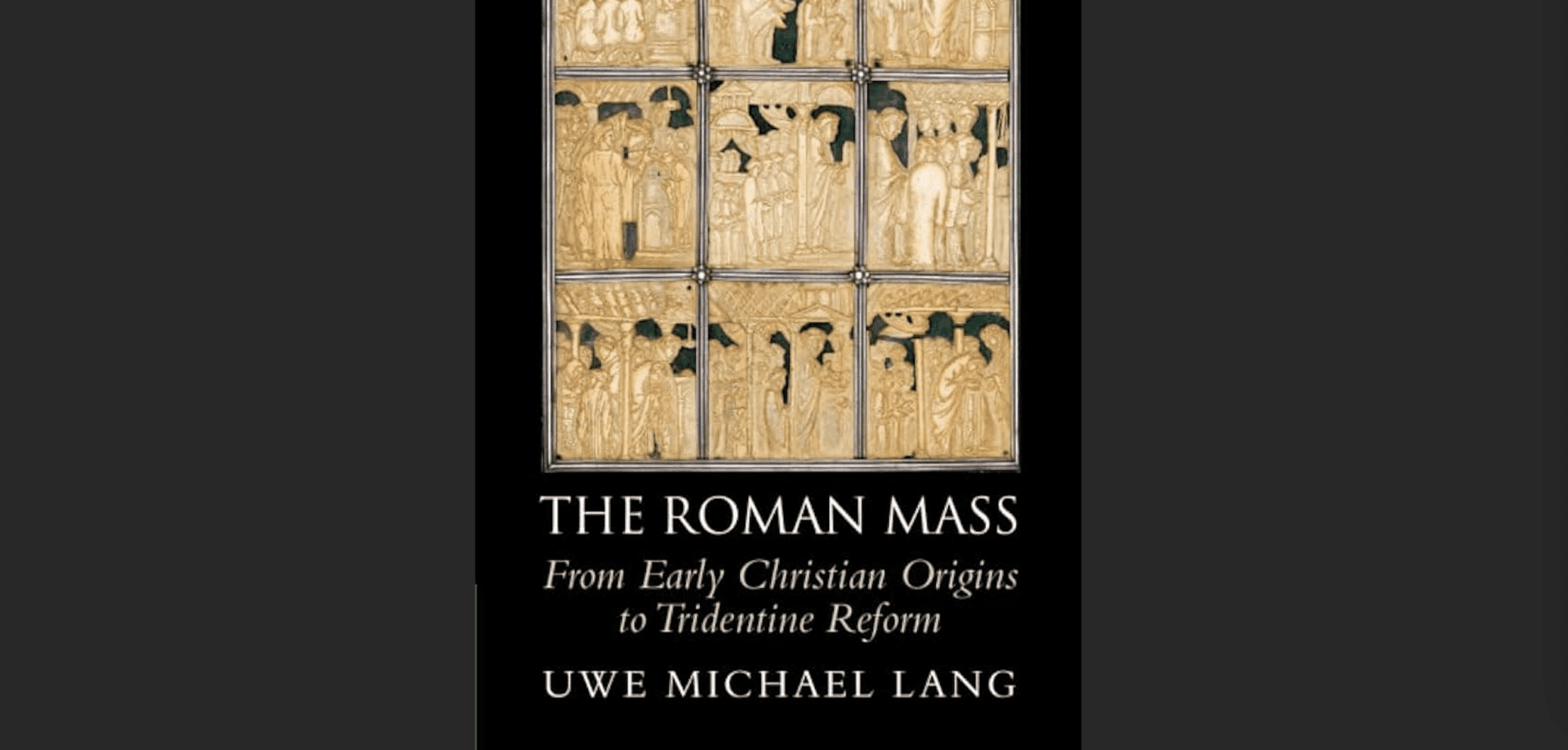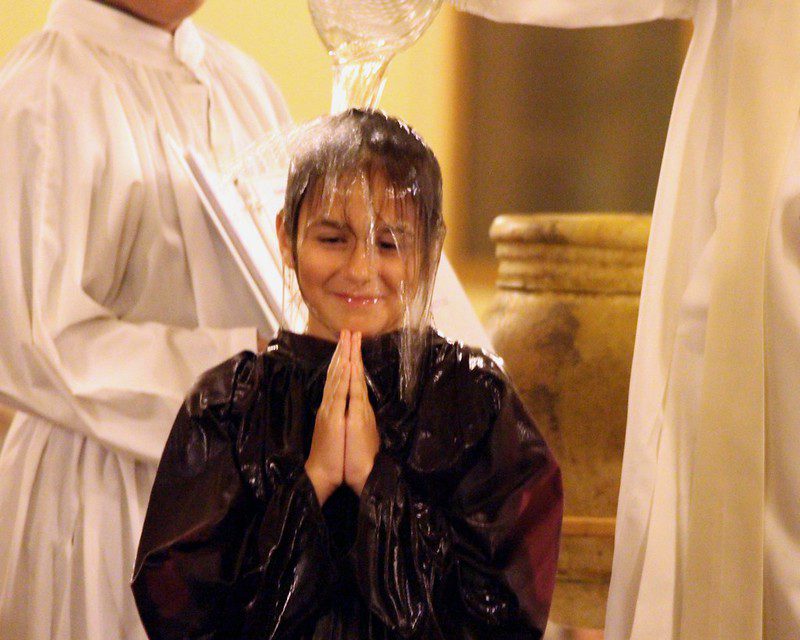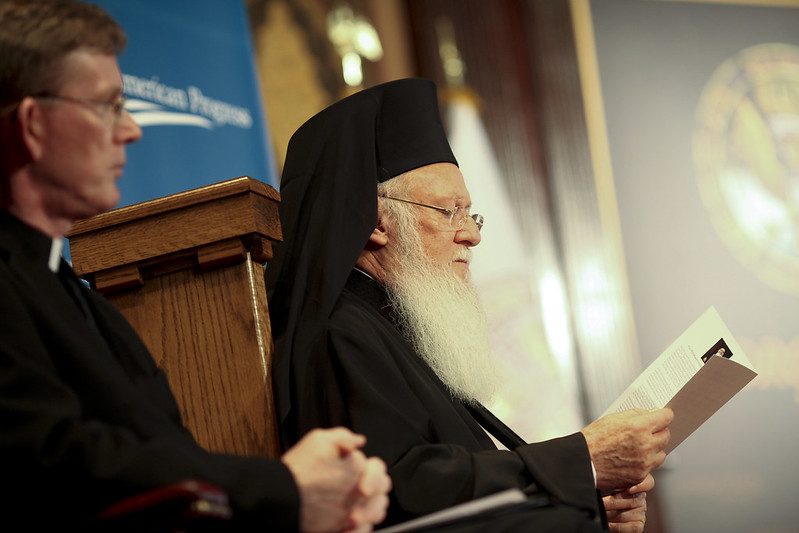Music lovers may remember how the Council of Trent almost banned polyphony until one of its greatest composers, Palestrina, demonstrated just how clear and intelligible it could be. With musical history brought to such a dramatic inflection point, the only part of the episode requiring improvement is its likelihood: historians now hold Palestrina had no discernible influence on the conciliar decrees.
Though this anecdote is merely an aside in Father Uwe Michael Lang’s latest book, The Roman Mass: From Early Christian Origins to Tridentine Reforms, the need to revisit common knowledge about polyphony may serve as a condensed marker of the timeliness of a work like Lang’s. What was once “known” about liturgical history has changed in many ways over the decades as old positions are questioned and new evidence disseminated. Yet the pace at which individual advances are noticed and integrated into further scholarship is often slower than one would hope. Accordingly, while landmark studies of the past remain valuable—even indispensable—the time was ripe for a new synthesis of both current consensus and ongoing debate in the study of the Roman Mass.

The Roman Mass: From Early Christian Origins to Tridentine Reforms by Father Uwe Michael Lang. Cambridge: Cambridge University Press, 2022. 456 pp. ISBN: 978-1108832458. $95.82 Hardcover.
In providing this welcome reassessment, Lang carefully avoids replacing one overconfidence with another. His survey of the field, to his credit, is not a boldly revisionist work but a cautious examination well aware of the limitations that often prevent us from drawing strong conclusions. Lang warns that the mosaic of early sources yields fragmentary knowledge at best (5), and even then primarily through texts which are hard to interpret without the orally transmitted tradition meant to implement them. Understanding these sources requires consideration of broader historical context across “centuries of intense religious, social and cultural transformation” (1) and attention to participation of the lay faithful whose liturgical role is largely undocumented (6). Thus, with no desire to attempt his own detailed history, Lang aims to draw together specialized liturgical studies (2) and broader artistic and social perspectives (307) to advance research and debate, following Ratzinger’s lead to question “the prevailing narrative that the Roman liturgy moved from early dynamic development through medieval decline to early modern stagnation” (3).
Lang does not oppose that prevailing narrative with a mirrored account of constant vitality—while highlighting sometimes undervalued richness in High Medieval liturgy he readily admits the coexistence of decline—but instead lays out an arc of continuity in which oft-criticized liturgical features are shown to be present, if not from the beginning, then at least from a sufficiently early period as to suggest they are not deviations from the purer form but true to type enriched over time.
Early History
A reader may initially wonder why so many early pages are devoted to sources predating or outside clearly Roman material. Even if these sources are necessary to grasp the full sweep of liturgical history, some have little to no direct impact on Roman worship. Yet as the sources accumulate, the discrete details also coalesce into an important foundation for later claims about organic development. For example, having warned that attempts to derive Eucharistic Prayers from meal blessings “should be met with great caution” (19), Lang’s observations about the propitiatory valence of the Matthean Institution Narrative (26), the movement to replicate the (Second) Temple’s holiness and purity outside its literal precincts (42), early worship in commercial, leisure, and outdoor spaces that weaken the “house church” paradigm (68), and the sacred direction of prayer (74) collectively illustrate “the priestly and sacrificial understanding of the Eucharist” (77) present at the outset of all ritual families. We should not be surprised to find that these core traits would naturally blossom over the centuries to come.
As Lang moves into specifically Roman material, he provides short studies of the origins and character of individual parts of the Mass during the period in which they first entered use or stabilized. Thus the “formative period” of the fourth and fifth centuries examines the Sanctus (113), Roman Canon (114), Collect (132), and Preface (138). The Preface’s longer developmental arc (its decreasing variability through the Hadrianum and the 1570 Missal until reexpanding in 1970) is quickly rehearsed at this point, such that it needn’t be revisited in each subsequent period examined by the book. This method of fairly comprehensive treatment at earliest appearance conveys a strong continuity in which each era builds upon, without replacing or discarding, its inheritance. And this brick-by-brick construction continues to rise as the chapter on “Roman Stational Liturgy” explores the ceremonies of the Ordines Romani and the formation of the sacramentaries (156), lectionaries (159), and antiphoners (179) needed to celebrate them.
Several times in these middle chapters Lang counters a once-popular theory. For example, he briefly notes that the Offertory chant shows no signs of an original antiphonal structure between choir and congregation to accompany processions (185; even earliest sources are melismatic). At more length his description of Latinization in Roman worship convinces that it had more to do with creating Christian culture (with, to this point, an elevated and complex linguistic register) than “vernacularization” for immediate comprehension. (Consequently, liturgical Latin’s outliving any native use cannot be faulted too severely for distancing lay worshipers, many of whom—like the Goths—never spoke the language even when their regions first adopted the rite.)
The two chapters from Carolingian Age to the High Middle Ages chronicle the spread of Roman liturgical usage and trace the Ordo Missae from nascent strata through increasing precision of rubrical instruction. While it remains true that Charlemagne requested a Roman liturgical book in order to conform to the custom of the City, Lang twice notes (228, 255) that scholarship has abandoned a theory of sweeping Romanization and unification by imperial fiat. Instead, as educational reform allowed wider circulation of more books in better Latin and Roman sources were more freely adopted and combined with native custom on local initiative, yielding a welcome enrichment in the process.
Later Romanization
Lang portrays later waves of Romanization, too, as more gradual and pluriform than previous histories may have let on. For all of Gregory VII’s desire to restore Roman usage and expand its adoption among local churches, Lang effectively demonstrates how the expected reform was not enforcement of Roman “purity” so much as a matter of following the order currently employed by the pope (277) while this basic papal pattern continued to allow for diversity in detail even among the churches of Rome (279; the proper traditions of the Vatican and Lateran basilicas were cultivated with sufficient vigor as to merit continuation past Pius V’s reform). And just as this nuancing of the Gregorian reform leaves the larger outline of Romanization in place, Lang does not reject the general view that the Franciscans’ adoption of the papal curia’s liturgy as their own was responsible for spreading that curial variant throughout Europe, even if he does believe that their praxis was more varied than the initial theory of uniform prototypes, for which no manuscript evidence exists (283). These adjustments are typical of the reevaluation Lang provides: the main lines and periodization of liturgical history (usually) remain intact while details within that larger picture are brought into better focus.
To turn back from Lang’s sketch of this history to his valuation of the developments, he believes that it is important to acknowledge just which variants were the basis for elaboration north of the Alps. While the chants brought north by Roman singers were performed somewhat more simply in more Frankish idiom, they were still prayed in Masses on the model of Ordo Romanus I. Thus the Eucharistic liturgy was understood from a fully solemn paradigm. Less elaborate forms, whether the far simpler rites of the Roman tituli or the barest basics of the emergent “private Mass,” were deviations from—and still conceptualized according to—the solemn standard. Consequently, Lang renders a different judgment than many previous scholars regarding the development of the Ordo Missae through more copious rubrics and incorporation of apologiae, priestly prayers and gestures noticeable to few worshipers other than the celebrant. Against accusations of elaborate imposition on primitive sober simplicity, Lang notes that these apologiae were inserted in an already lavish paradigm of worship set, as noted, by Ordo Romanus I (266). In fact, rather than unduly embellish already solemn rites, the apologiae and the Ordo Missae in which they were set gave more coherent form to private Mass and thereby enabled the development of its reduced ceremonial. Enriching the celebration of Mass according to its original solemn intent, the Ordo Missae unintentionally contributed to currents of decline in Roman practice.
But even then, decline does not mean wholesale corruption. While conceding some decline from the Late Middle Ages onward, Lang positions it alongside continued vitality, with divergent religious tendencies uneasily coexisting. On the one hand, “the sheer materiality of religious devotion” fed true lay investment in “untexted” but multisensory forms of participation (318) that vivified community (322). But certain elaborations physically removed laymen from the altar ceremonial of high Mass beyond screens, servers, and singers (319, 339). As private Mass at side altars was sought out for proximity, this converged with the second tendency of the age, toward interior and private devotion, to gradually erode the normativity of solemn Mass. Pius V’s Missal in 1570 codified that shift by prioritizing instruction for celebration of low Mass (355). Ironically, then, although gratifying the humanists’ priority of the spoken word, this sought-after physical proximity to low Mass only widened the gap between priestly liturgy and lay devotion by elevating the form of celebration lacking many other sensory stimuli by which late medieval worshipers could participate. Thus, while Lang convincingly calls for greater appreciation of the Carolingian and subsequent developments that yielded vibrant late medieval liturgy, he makes no attempt to paper over weaknesses of the Tridentine settlement at which his book ends.
New Starting Point
Much more could be said about this carefully sourced study of the Roman Mass, which should become a new starting point for refining our understanding of this history. Lang is to be commended for compacting so much scholarship into a single volume. The flip side, of course, of touching upon so many liturgical issues over so many centuries is that one often wishes to learn more detail than the format can spare. This is offset somewhat by the footnotes and ample bibliography, but as one breezes through the single paragraph devoted to the Communion chant or two paragraphs for the Offertory, it becomes clear that those who will benefit most from Lang’s latest book are those already well grounded in the history of the Roman Rite.
This review has, admittedly, labored under (far smaller yet) similar constraint with no room to remind readers of basics before addressing the finer details of his arguments. Language is, however, no barrier (all liturgical texts are rendered into English), and readers not already familiar with the character of introits and graduals or able to distinguish the Canon’s Te igitur section from its Supra quae might still use Lang’s book as a jumping off point into cited sources. Thus, while best for scholars with a strong foundation upon which to build, Lang has furnished an invaluable guide to anyone hoping to refresh or augment study of the Roman Mass.


